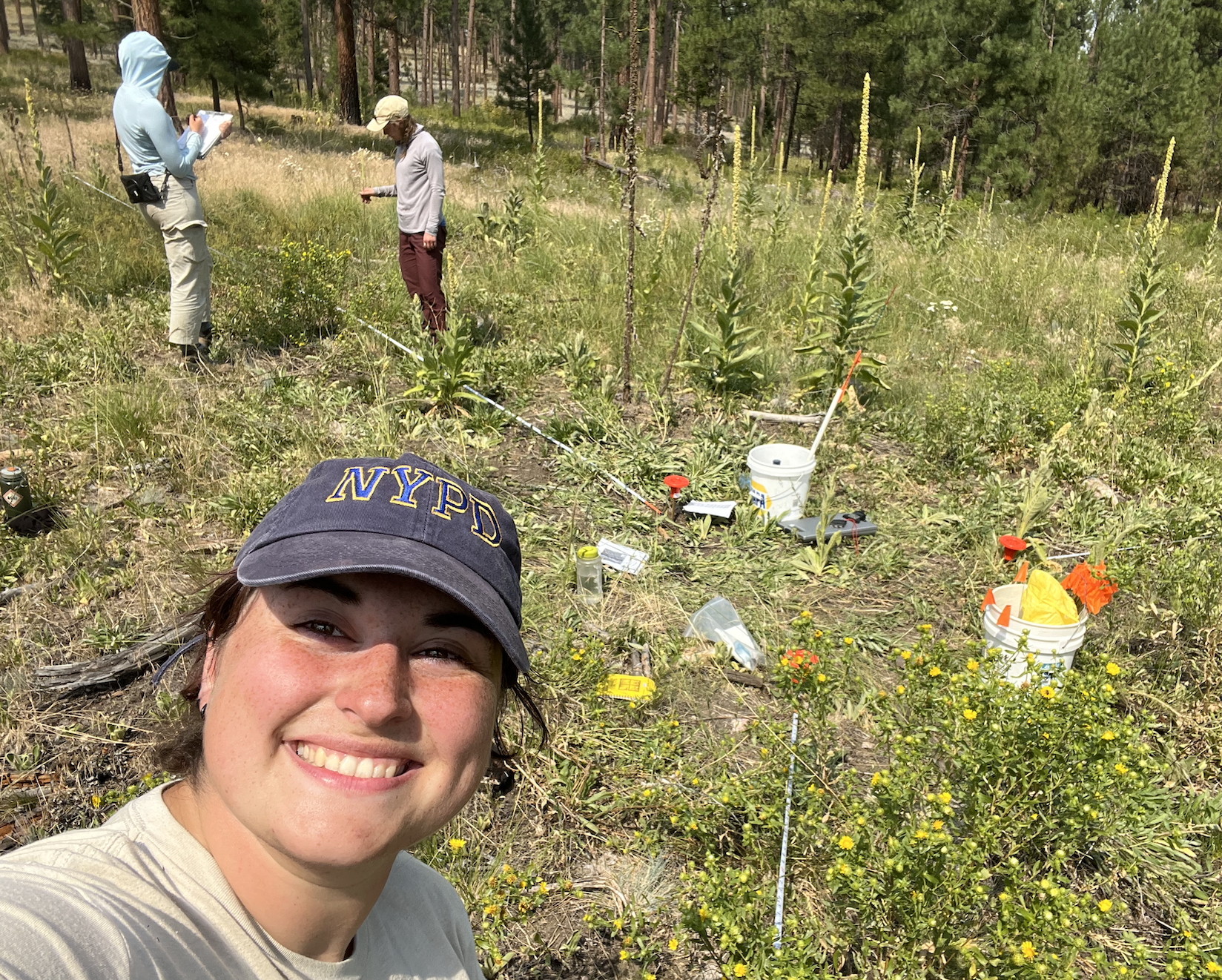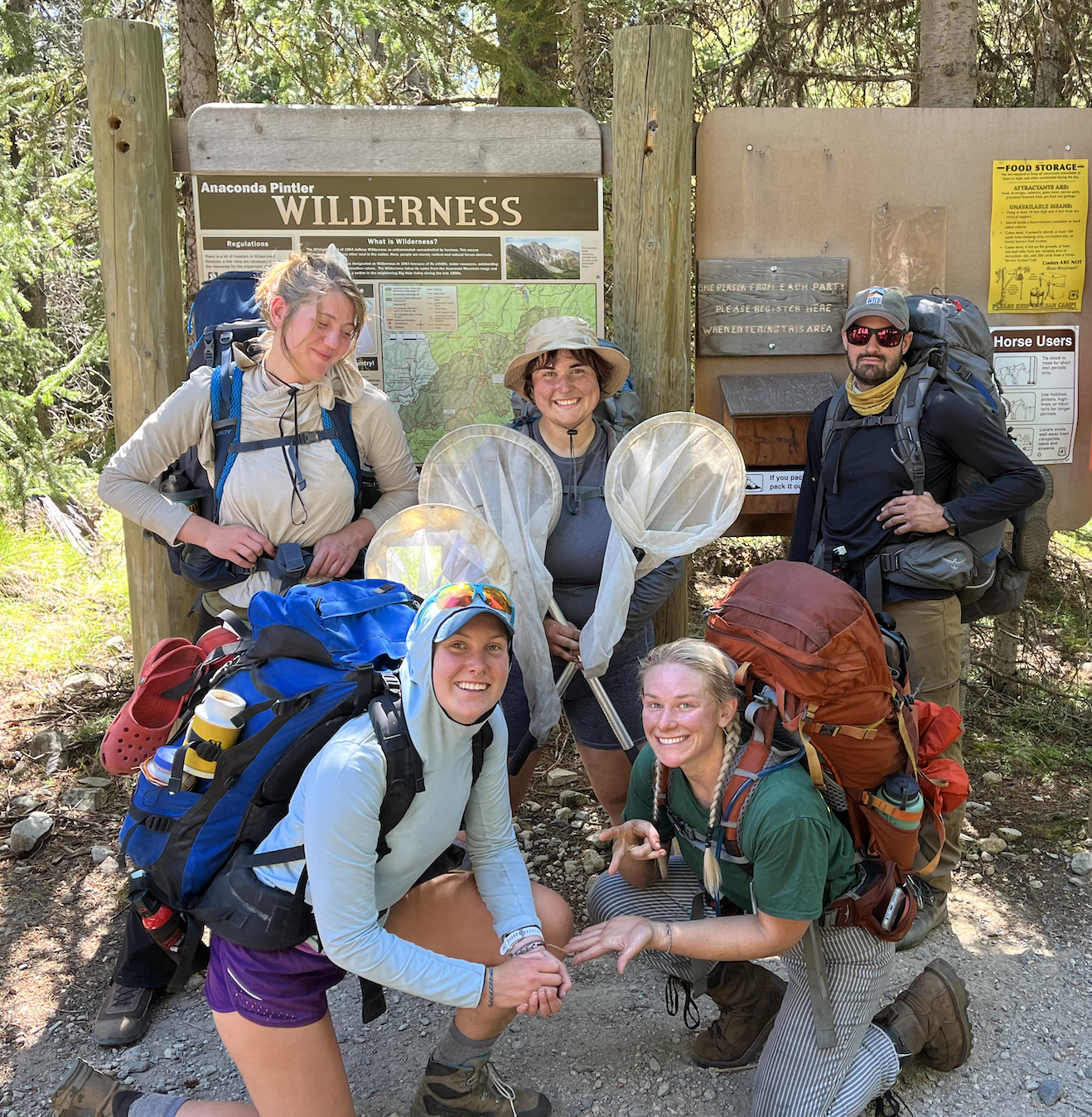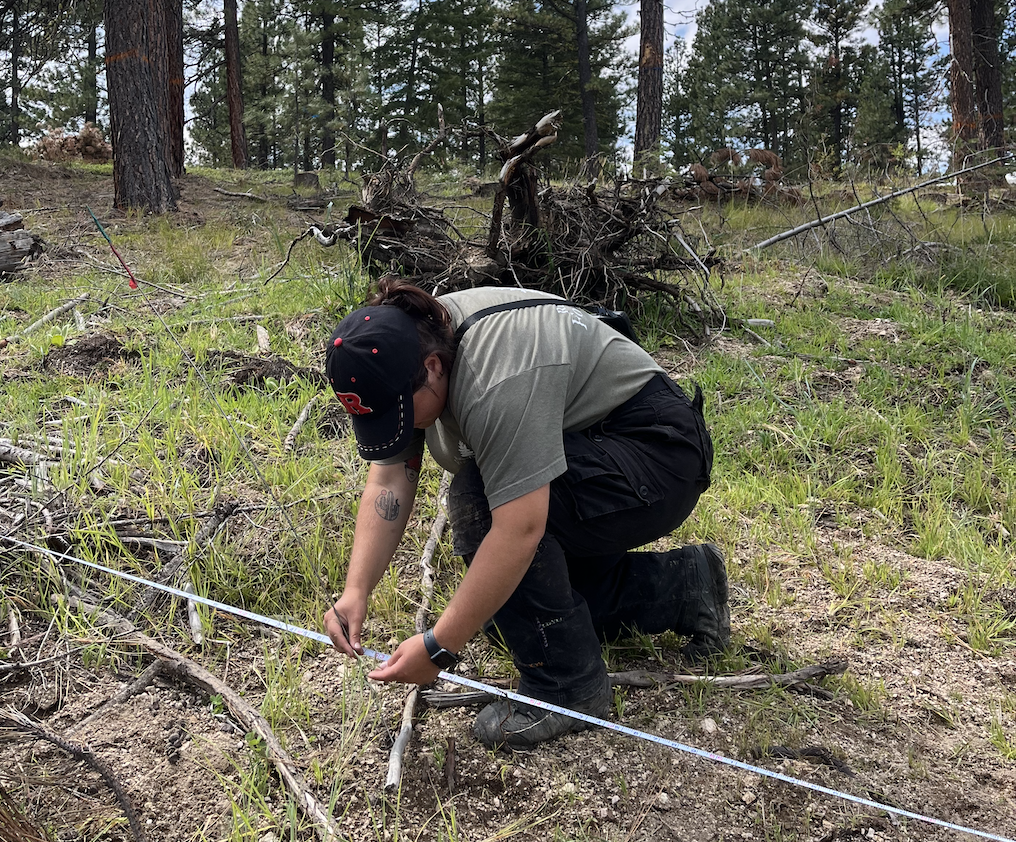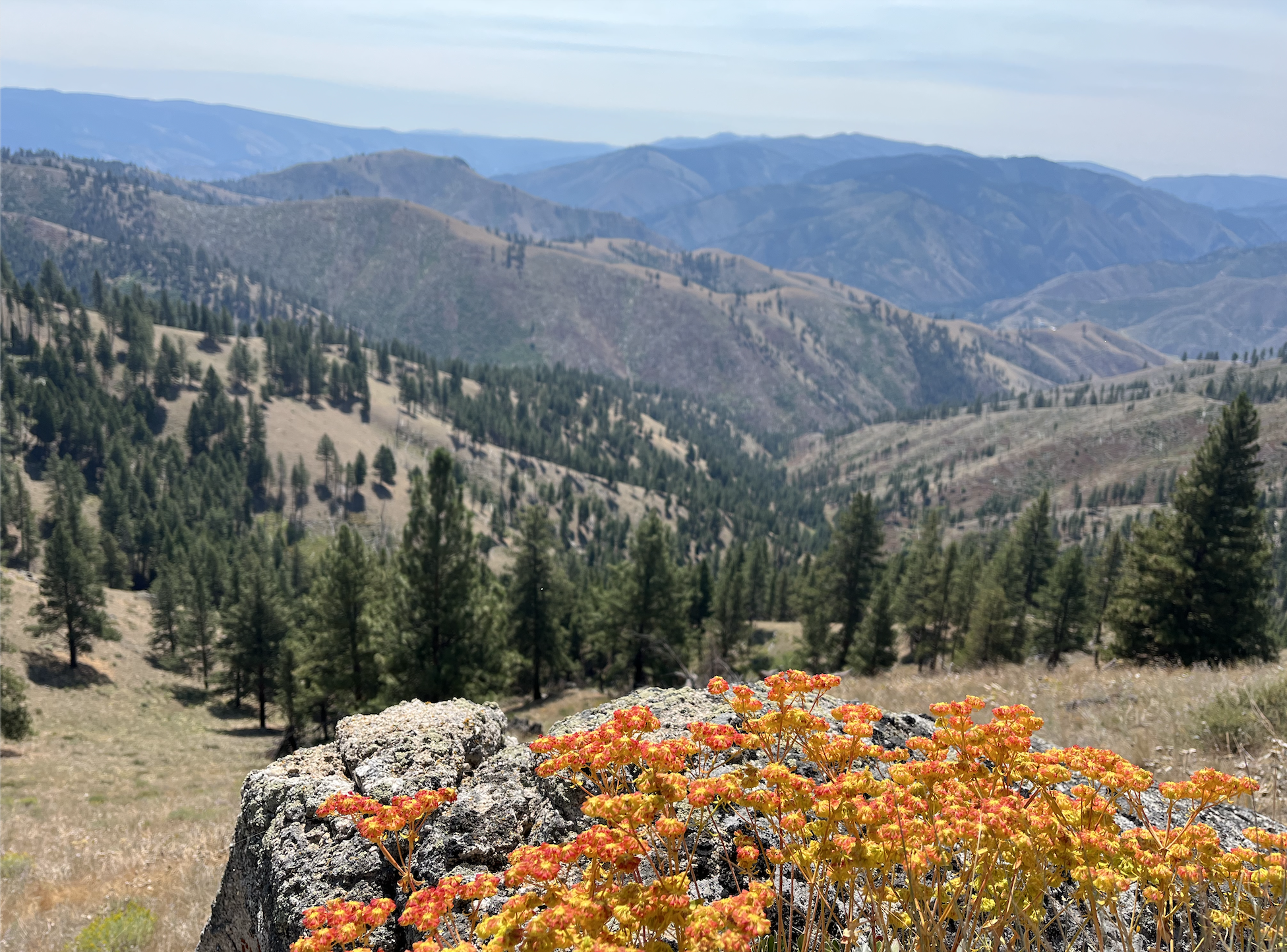Boy was this a busy one. We started the month with monitoring the pollinator islands that were established in landing sites throughout the forest last year. One of the goals was, of course, to remediate the land that was cut down and compacted from tons of lumber. However, another goal was to essentially build a pollinator bridge – to bring the pollinators from the forest and encourage them to head down to the farms below. Our purpose was to perform line point intercept in order to understand how the landscape is changing after planting and seeding last year. The seed mix was a very long list of all the different native pollinator-friendly species in the forest and so far it seems like most of the plots are doing well. The hard part about seeds though is that it can be tough to judge the success in the first year because many seeds won’t come up the following season, and could possibly not come up for multiple years. So even if the seed success isn’t impressive the year after planting, that doesn’t mean the project is not a success in the long term.

We spent a while monitoring these 17 plots, but to break things up, we had a cross-over episode with the Beaverhead-Deerlodge botany team at the Anaconda-Pintler Wilderness. They taught us all about how to survey for bees – where to find them, how to catch them, and what to do with them after. This was also my first time backpacking!

From here, we did a bit of surveying. We focused on areas that have planned pesticide treatment, and we looked at historic populations that may be in the area. Although we didn’t find anything, we got some great views! Other than that we also worked on some timber seed pilot monitoring, where we looked at seeded skid trails and temp roads to see how the grasses are growing in. Most were pretty successful, with Bromus, Psedoroegneria, and Elymus being the most common. We have been working on a bunch of these plots in two finished timber projects, one on the west side of the forest, and one on the east side. So far, these plots have been quite promising, but we will see in thee coming years how the seed mix is working.

Last, but of course not least, we have spent days and days working on seed collection. We have collected about 30 different populations – most on the smaller side. There are still lots of plants that we are waiting to collect, but I’m surprised at the amount that we have found ready. I hope this next month we will get some larger populations!

